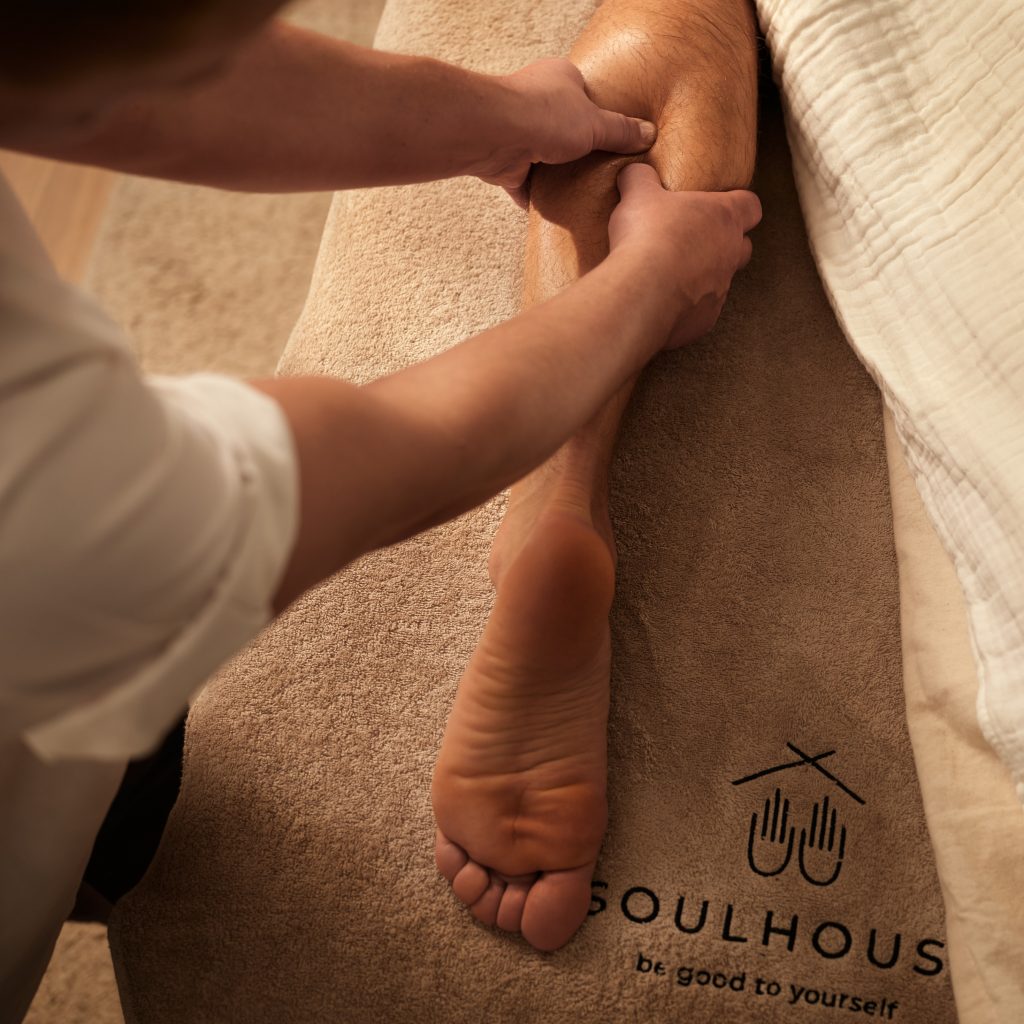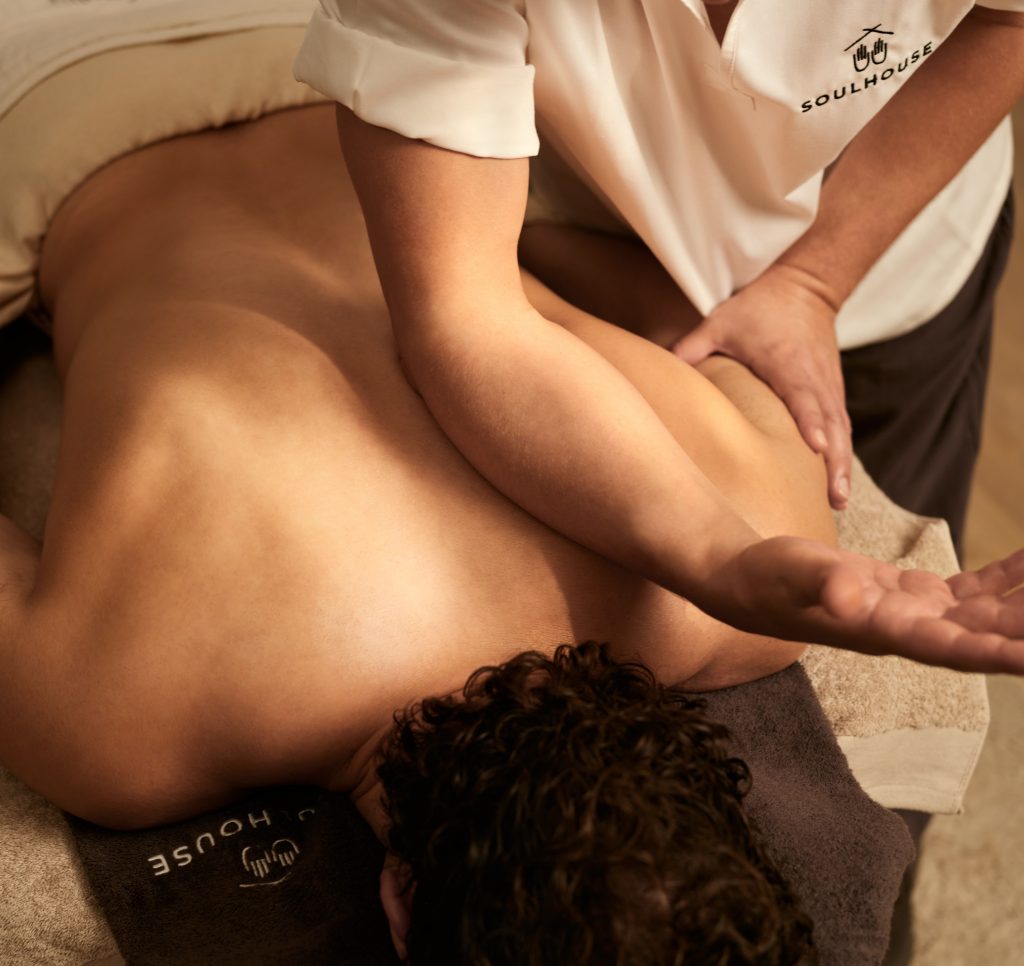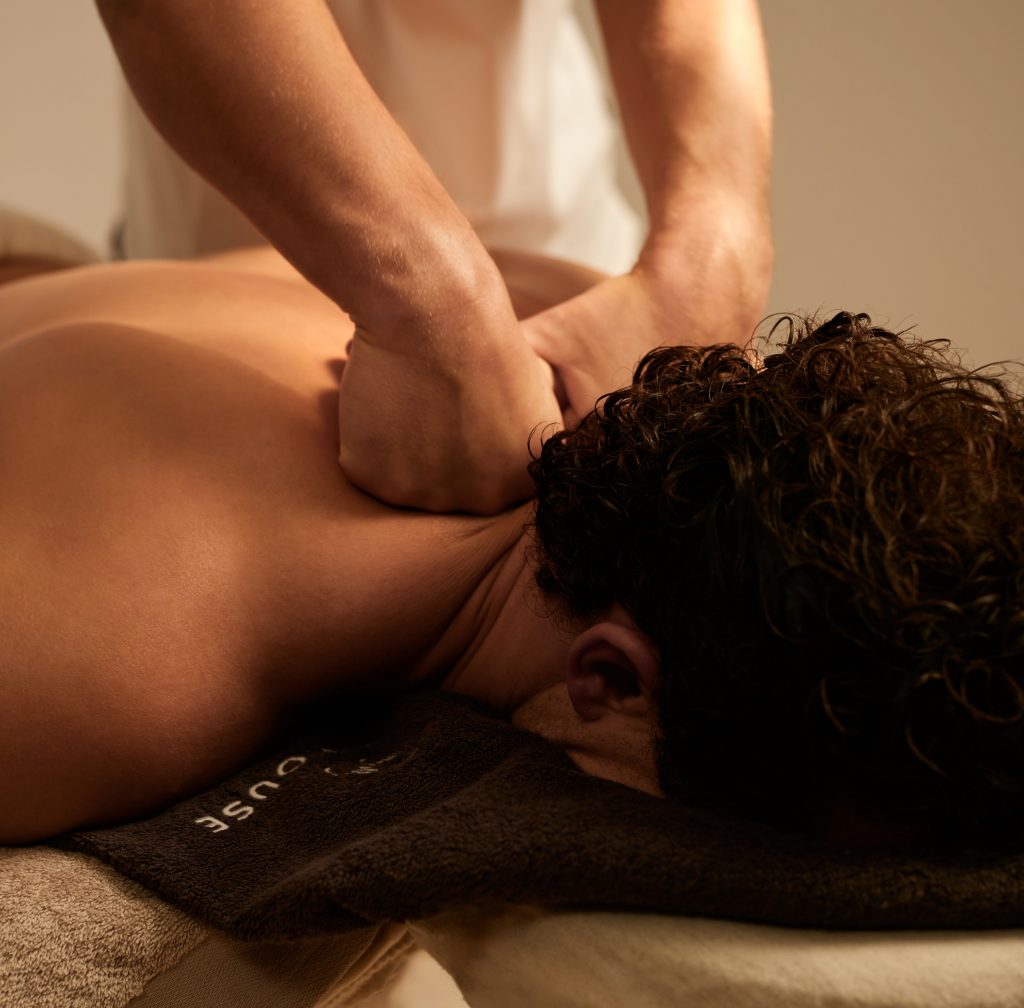Connective tissue massage
The connective tissue massage is a reflex zone massage originating from physiotherapy, which is applied with different grip techniques, especially on the back, to treat the fascia tissue and the skin.
- It has a regulating effect
- Helps with stress, migraine, digestive & mobility problems
- Degree of pressure: medium-strong
Interesting facts about connective tissue massage
Connective tissue massage, like lymphatic drainage, is a classic manual therapy in the field of physiotherapy and is designed to improve your health. It is performed with hands and positively affects your organism on many different levels. In contrast to a feel-good massage, which primarily serves to relax, the connective tissue massage is a supportive treatment option for various physical discomforts. From this text you will get to know what the definition of connective tissue massage is, which techniques belong to it and how it is applied.



What is the definition of a connective tissue massage?
The massage of the connective tissue is also called subcutaneous reflex therapy (SRT) or subcutaneous reflexive therapy (subcutaneous = under the skin, reflexive = concerning the reflexes). Special grip techniques are used to treat the zones around your skin, the subcutaneous tissue underneath, the underlying fatty tissue and the fasciae (soft-part components of the connective tissue). The manual treatment of the tissue layers loosens and releases adhesions.
The main area that is treated when performing connective tissue massage is your back and eventually your abdomen. At the beginning of the therapy, the massage technique is initially only used on the pelvis. Over the course of further sessions, your entire back will gradually follow. There are also special forms of therapy that involve the treatment of individual body segments (segment massage).
What are the origins of connective tissue massage?
The beginning of the treatment of connective tissue can be determined very clearly, unlike other massage techniques. The origin is found in the medicine of the 1920s. Nurse Elisabeth Dicke had recurring severe pain in her back due to a disability, as well as considerable deafness in one of her legs. The reason for the disabled leg was massive circulatory problems. Doctors already saw amputation of the leg as unavoidable. There were no other possibilities to help, known in medicine at that time.
Due to the severe pain and the imminent loss of her leg, Ms Dicke tried to self-treat herself. She began to treat her iliac crest and sacrum very regularly with intensive stroking movements. Over time, clear improvements could be observed. The leg became more mobile and the pain reduced without side effects. Ms Dicke was able to save her leg through effective self-treatment around the connective tissue and went on to develop the basic technique of treatment in her own medical office. Today, the method is used in most physiotherapy practices.
What is the mechanism of a connective tissue massage?
The mechanism of the treatment is based on influencing the functionality of the various internal organs. The so-called reflex effect of the massage refers to the specific area of its application. Depending on the zones of your body that are treated, different organs can be addressed.
A primary effect of connective tissue massages is the associated stimulation of your peripheral arterial blood circulation, which has a correspondingly positive effect on the oxygen supply to your arms and legs. Evidence for the effectiveness of massage for specific diseases exists in connection with certain diseases of the respiratory system. These are mainly functional disorders, such as coughing, shortness of breath and spasms in the muscles of the bronchial tubes. The gastrointestinal tract and the autonomic nervous system are also positively influenced by a connective tissue massage and a variety of other diseases are prevented.
What happens during a connective tissue massage?
During the treatment, your therapist loosens stuck-together subcutaneous and connective tissue areas by using different grip techniques. In consequence, the skin may feel a little different. This is definitely not painful for you, but it feels different from a feel-good massage. Many patients describe the feeling in the respective zones as a slight cutting sensation, while others more as a burning. The reason for this is the significant increase in blood circulation during the massage.
During the treatment, the individual connective tissue zones are addressed. They are under a lot of tension and strain in everyday life, which can also manifest itself over time in pain in the surrounding regions. The corresponding massage techniques that are used aim to relieve existing pain and improve the elasticity of the tissue.
Different methods are used depending on the symptoms with which you are visiting the therapy. The manual treatment ranges from a superficial shifting of an area of skin with flat hands to a shifting of the deeper subcutaneous tissue with the fingertips.
What is the procedure of a connective tissue massage?
At the beginning of treatment, you inform the therapist about the type and location of your pain or discomfort. The massage takes place in the form of several successive stages and follows a clear sequence. The first treatment is to confirm your diagnosis with the therapist. For this purpose, an initial overview is required, which is developed through questioning, feeling and touching the tissue. This allows the fluid content in the tissue to be determined or any differences in tension around the muscles. A treatment plan is then created, which usually includes several sessions and which is step by step discussed with you.
In most cases, the duration for a single treatment is between 15 and 30 minutes. Depending on the starting point and agreement between you and your therapist, longer appointments are also possible. The exact time usually depends on the intensity of your pain. The number of required sessions cannot be clearly determined in advance. It depends essentially on the initial condition with which you have started the treatment and how your symptoms develop.
When is it helpful to perform a connective tissue massage?
The areas of treatment are varied but primarily those of physical restrictions or pain in the musculoskeletal system are being addressed. As an accompanying and supportive treatment, they can also help you with numerous other disorders.
Examples of treatment areas:
- Circulatory disorders
- Arthrosis
- Rheumatism
- Respiratory diseases
- Neuralgia (nerve pain)
- Spasticity
- Disorders of the digestive organs
Even if you are not in pain, a massage of the connective tissue can be beneficial. For example, many people are bothered by their cellulite (orange peel skin). Unfortunately, it cannot be completely eliminated by massage, but the appearance of the skin can be significantly improved, just as with lymphatic drainage.
What are the contraindications for connective tissue massage?
Even though the treatment usually has no side effects, there are some diseases and health conditions that should not be treated with a connective tissue massage. The reason for this is the relatively intense mechanical stress to which your tissues are exposed through the various massage techniques.
Exclusion criteria:
- Diseases of the cardiovascular system
- Thrombosis
- Severe fever
- Tumour diseases
- Open wounds
- Acute inflammations
- Acute injuries to the tissue
What are the costs of a connective tissue massage?
The costs of connective tissue massages depend on the duration of the treatment.
At Soulhouse, you can only take the connective tissue massage as a self-payer for your personal well-being, the treatment is at least 60 minutes long and, like the other treatments, starts at 69€. At Soulhouse you can always expect a fair price/performance ratio, our treatments are up to 30% cheaper than in comparable studios. Have you got interested in connective tissue massage and would like to try it out? Then download our app today or use online booking on our website and book your treatment with just a few clicks.